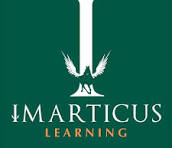S4 Capital’s Monks has partnered with the Centre for Community Initiative (CCI) to use AI voice cloning to help nonverbal children communicate meaningfully and in a way that mimics their own voice tone and texture.
India, 4 April 2025 – Using AI technology, Monks, the global, purely digital, data-driven, unitary operating brand of S4 Capital plc, and the Centre for Community Initiative (CCI) have given parents the gift of hearing their nonverbal children’s voices for the first time.
The ‘My First Voice’ interface uses AI to give speech-impaired children the ability to communicate in their very own voice by replicating the personalized tone and texture of their sounds.
Ahead of World Autism Day on 5 April, Monks and CCI are announcing an ongoing partnership to scale up the My First Voice solution to reach more parents and children across India.
According to 2023 data from the Indian Academy of Paediatrics (IAP), 5% of the Indian population is estimated to be on the Autism spectrum, with a significant portion of children starting their lives nonverbal. Autism Spectrum Disorder represents just one reason children can be non-verbal, with My First Voice also seeking to help nonverbal conditions arising out of cerebral palsy, hearing-impaired mutism and other development disorders, representing millions of impacted children throughout India.
This equated to millions of Indian children starting their lives nonverbal, not only trapping them in silence but discovering a world deep-rooted with stigma, excluding them from the emotionally secure well-being that they should have access to.
As partners of UNDP and UN Volunteers, the Centre for Community Initiative is a not-for-profit disability and advocacy organization founded to tackle pressing societal issues primarily around speech-impaired and nonverbal children.
Pauzagin Tonsing, Director and Founder of Centre for Community Initiative, explains, “There are many children with disabilities, even in a remote town like ours, but the biggest challenge is diagnosis and acceptance by parents because of so much stigma around them. Only with acceptance are we able to move on to their education and therapy needs. My own son was born with a disability, and with other parents and community, we dreamed of having a place where we could send our children to learn and grow, just like everyone else’s children — that was the birth of CCI.
Technology can be a force for good, particularly when addressing the challenges that not-for-profit organisations face. Tonsig explains the challenges of CCI: “We struggle with resource mobilisation in terms of special educators, infrastructure, and money, but the community comes together to support the children and their families.”
It is also an isolating journey for parents, who can feel helpless and long for the reassurance that simply having two-way communication with their children can provide. Many parents quietly recede into social seclusion arising out of lack of awareness and sensitivity around the subject matter.
“When people hear Patrick, they stare and point because he sounds different; he cannot speak like them. I feel embarrassed taking him out too much because I don’t want them to stare at us and talk about us. So we leave quickly,” says Patrick’s mother, Christie.
Monks has created an answer to this, using AI to create a real-time interface that not only gives children the ability to communicate but in a voice that replicates their own tones and sound textures. The solution trains AI using recordings of nonverbal children, such as the hums, grunts and fragmented vowels, as well as speech samples of their family members to generate the closest version of the child’s own voice.
In a country with a rich linguistic landscape of many dialects and languages, voice-to-voice training creates a voice that mimics the family’s accent. The child-friendly solution uses real-time text-to-speech input, as well as expandable preset inputs to help children who cannot type due to the impairment of motor skills or limited cognition.
“An app like this, where he can type and hear the words spoken aloud, is incredibly useful for both him and us. The day he got the app, he was overjoyed and couldn’t wait to show us how it worked. Seeing him that happy made me so glad and grateful,” adds Tyson Lungousang’s mother, Nemzaneng.
Monks has spent the past two years developing the technology, shortening the time taken to record, synthesise and create a personalised AI voice from three days to less than five minutes.
John Paite, Chief Creative Officer, India, explained, “Creating truly natural AI-generated voices for non-verbal children required a hyper-personalized approach. Unlike conventional speech models, our dataset consisted of unstructured voice data, often unclear, mumbled, or lacking distinct articulation, making the training process significantly more challenging. Standard AI models couldn’t capture these nuances, so we had to rethink conventional training methods. By fine-tuning multiple parameters and finding workarounds for custom accent training, we develop a solution that mirrors each child’s unique vocal identity.”
Monks collected datasets from parents and siblings and refined the approach through iterative learning to counter AI’s tendency to generalize. After multiple tests, the process was streamlined, reducing voice training time to under five minutes, making it very scalable while preserving natural, hyper-personalized speech traits and ensuring authenticity.
Paite added, “This breakthrough will transform how non-verbal children interact with the world. With a voice that feels truly their own, they can express personal needs more naturally, whether communicating in school, asking for help in an emergency, or even sharing essential information like their name and address if they are lost. Beyond just speech, this technology fosters independence and a deeper sense of belonging, bridging the gap between them and the world around them.”
The pilot of this project was a success, with 10 children’s voices being heard for the first time. A mother heard her son say ‘I love you too’. A father listened to his daughter recite poems she’d been writing for over five years.
“These days, almost every home has a smartphone, which can be the biggest learning opportunity,” adds Pausuanlal Guite, Head of School Administration at CCI.
Monks will scale this via an ongoing partnership with CCI, which will help reach more parents and children to have their First Voice and garner more awareness among other global nonprofits to provide further momentum.
 Newspatrolling.com News cum Content Syndication Portal Online
Newspatrolling.com News cum Content Syndication Portal Online







